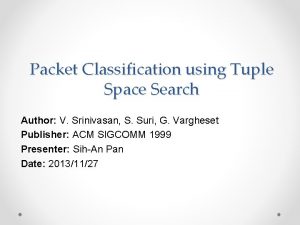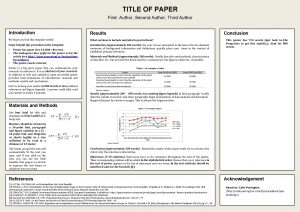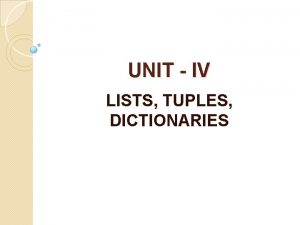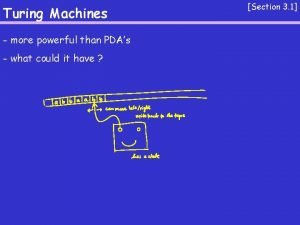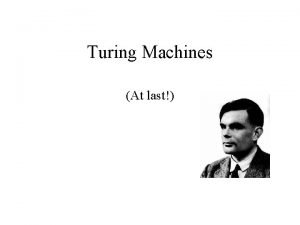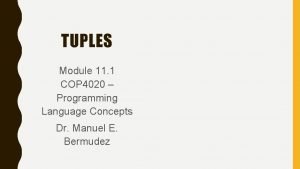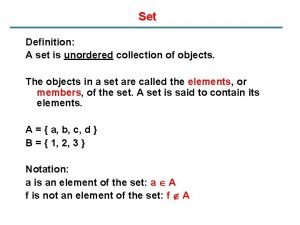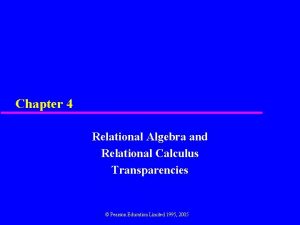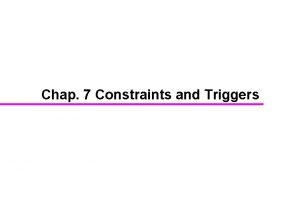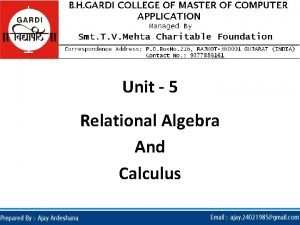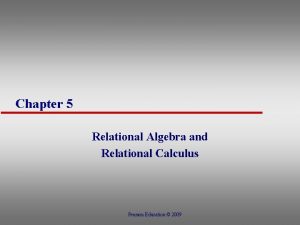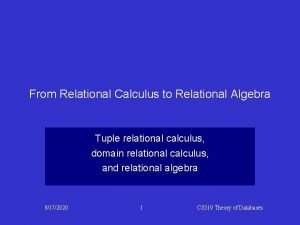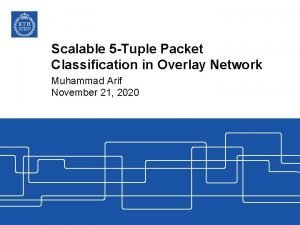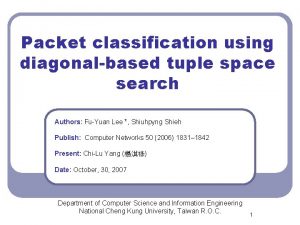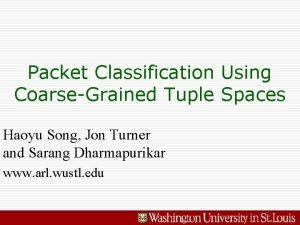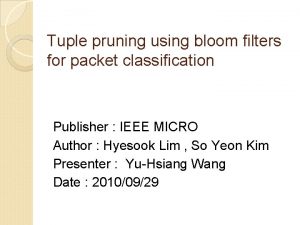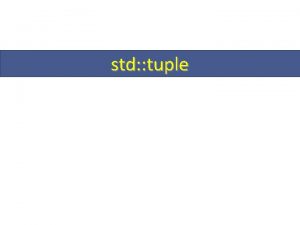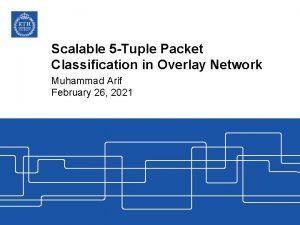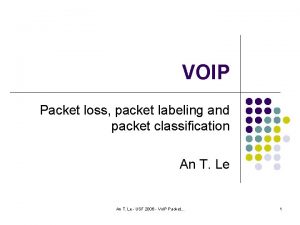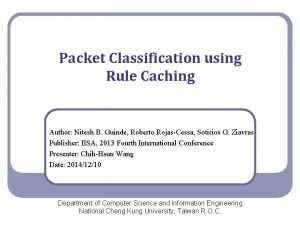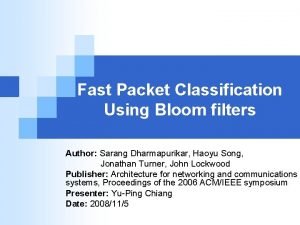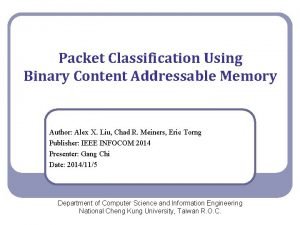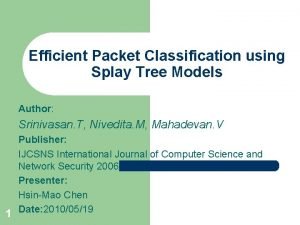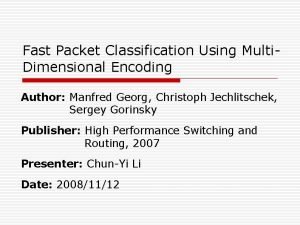Packet Classification using Tuple Space Search Author V















- Slides: 15

Packet Classification using Tuple Space Search Author: V. Srinivasan, S. Suri, G. Vargheset Publisher: ACM SIGCOMM 1999 Presenter: Sih-An Pan Date: 2013/11/27

Tuple Space Search n Our scheme is motivated by the observation that while filter databases contain many different prefixes or ranges, the number of distinct prefix lengths tends to be small. n Suppose we have a filter database FD with N filters, and these filters result in m distinct tuples. n Since m tends to be much smaller than N in practice, even a linear search through the tuple set is likely to greatly outperform the linear search through the filter database.

Tuple Space Search n We can define a tuple for each combination of field length, and call the resulting set tuple space. n By concatenating these bits in order we can create a hash key, which can then be used to map filters of that tuple into a hash table.

Tuple Space Search n The port numbers, however, are often specified using ranges, and the number of bits specified is not clear. n To get around this, we define the length of a port range to be its nesting level. Range. ID Level 0 1 2

Tuple Pruning Algorithm Packet = {0000, 01*} Source Trie Destination Trie Source Tuple List = {[0, 0], [0, 4], [2, 3], [4, 1], [4, 4]} Destination Tuple List = {[0, 0], [4, 1], [3, 2]} Intersected Tuple List = {[0, 0], [4, 1]}

Tuple Pruning Algorithm

Markers and Precomputation •

Markers and Precomputation

Markers

Precomputation

Rectangle Search n The search terminates when the we reach the rightmost column or the first row. n Since there are W rows and W columns, the number of probes needed is at most 2 W - 1

Rectangle Search

Storage Efficiency

Throughput (Worst Case)

Throughput (Avg. Case)
 Tuple space search
Tuple space search First author second author third author
First author second author third author String list tuple dictionary in python
String list tuple dictionary in python Pda is more powerful than
Pda is more powerful than Turing machine 7 tuple
Turing machine 7 tuple Singleton tuple
Singleton tuple N-tuple example
N-tuple example Markov decision process merupakan tuple dari
Markov decision process merupakan tuple dari Enteral parenteral beslenme
Enteral parenteral beslenme Robustness of turing machine
Robustness of turing machine The limited tuple relational calculus equals:
The limited tuple relational calculus equals: Tuple based check constraints
Tuple based check constraints Tuple and domain calculus collectively known as
Tuple and domain calculus collectively known as Relational algebra to tuple relational calculus
Relational algebra to tuple relational calculus Tuple relational calculus
Tuple relational calculus Similar image search
Similar image search
